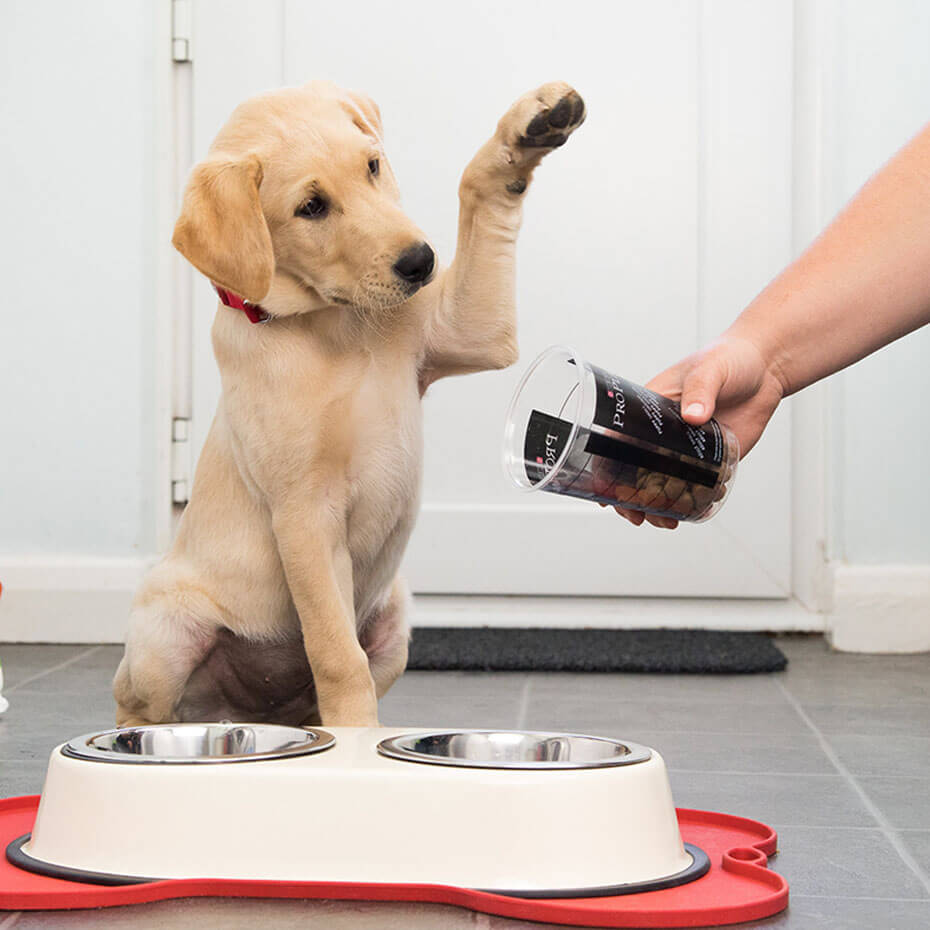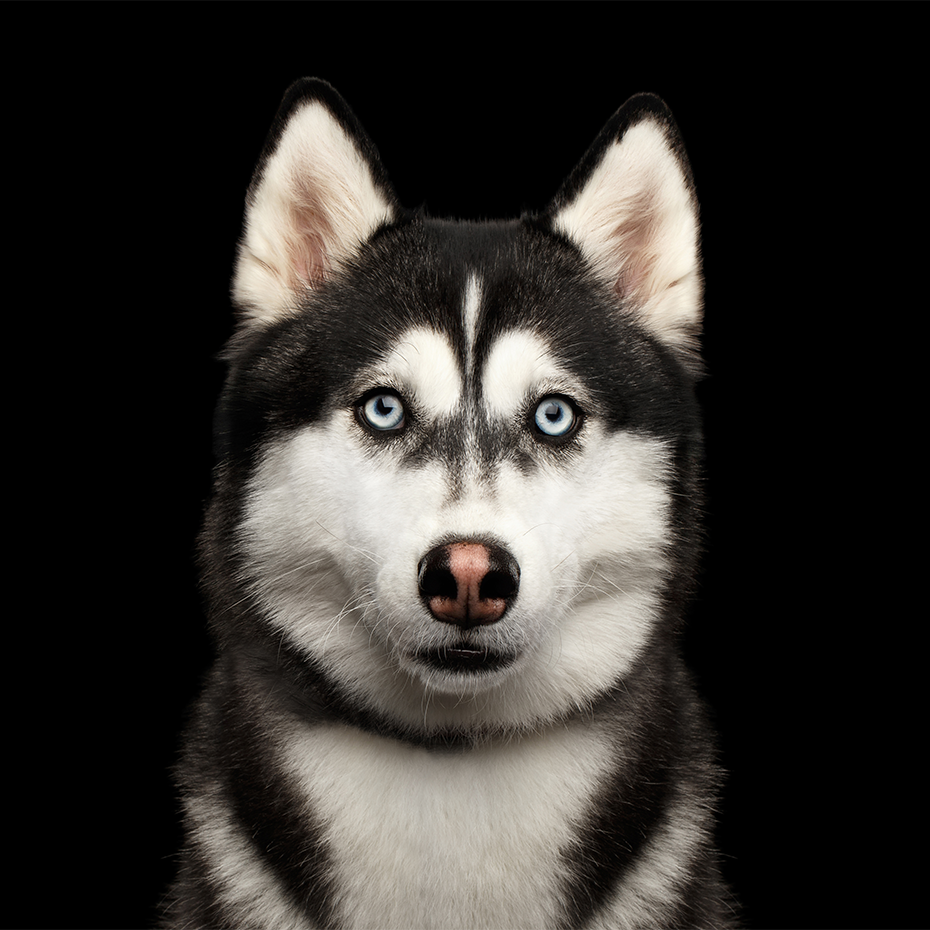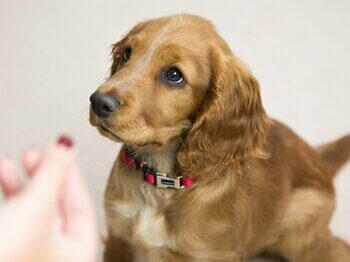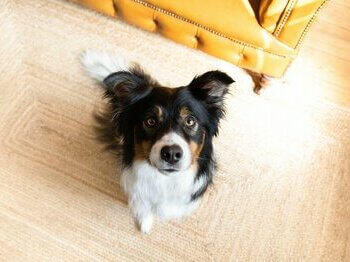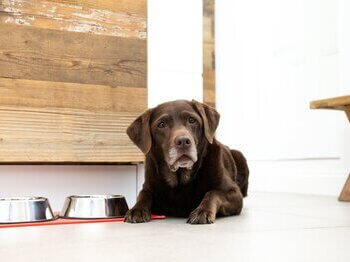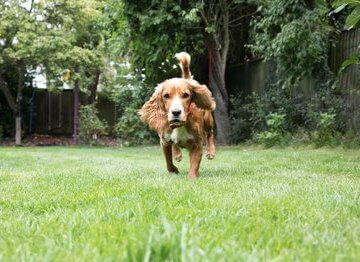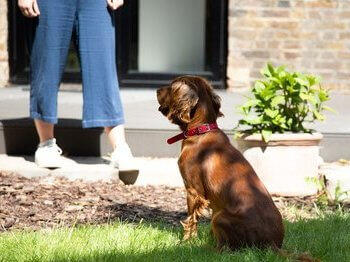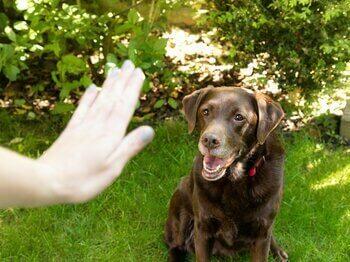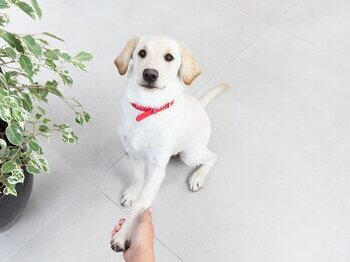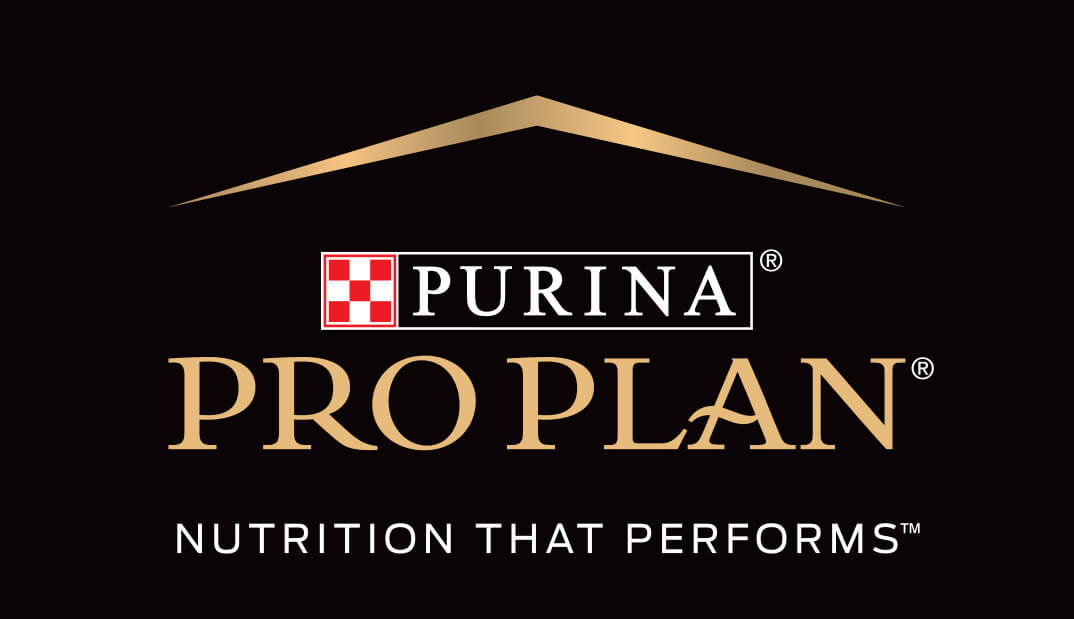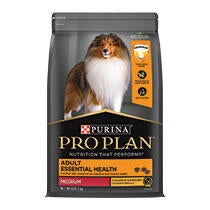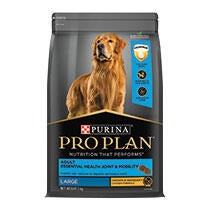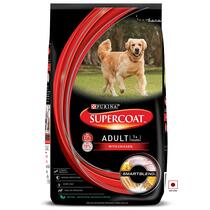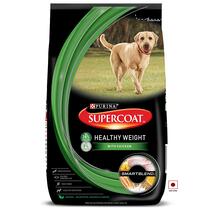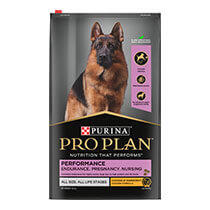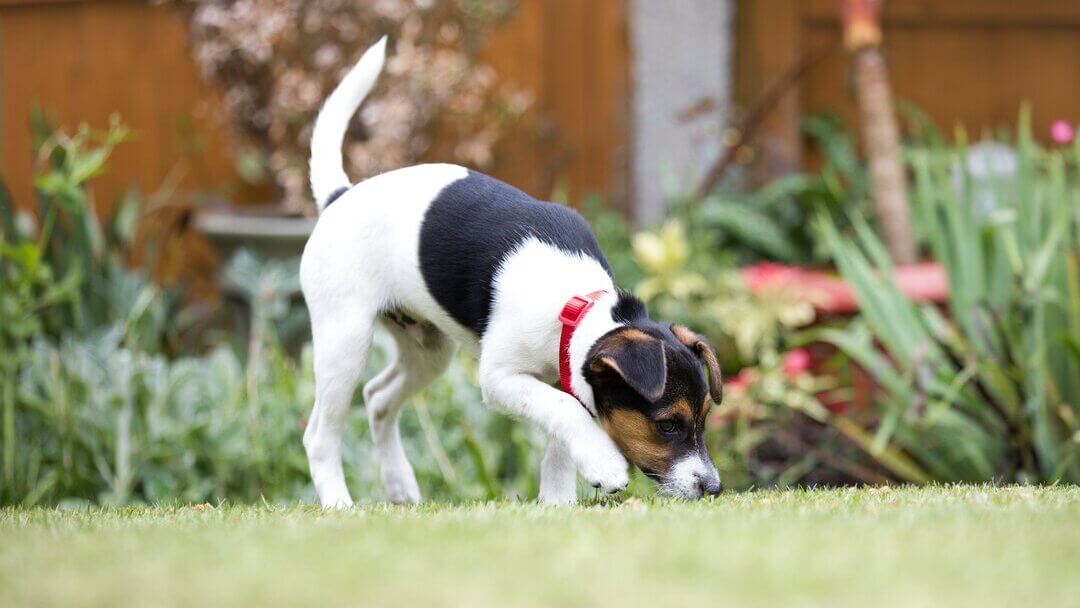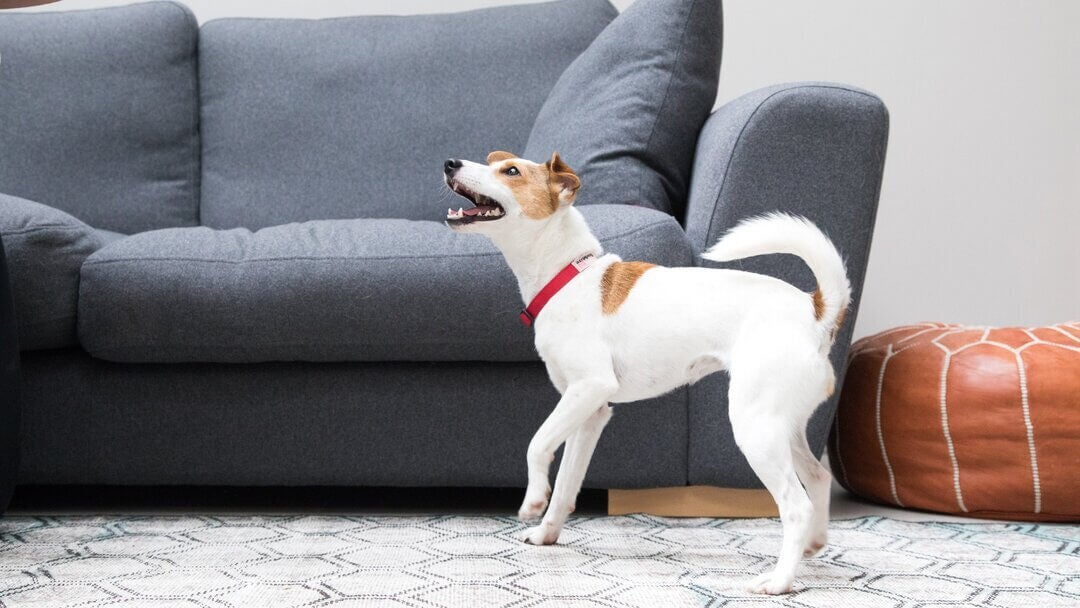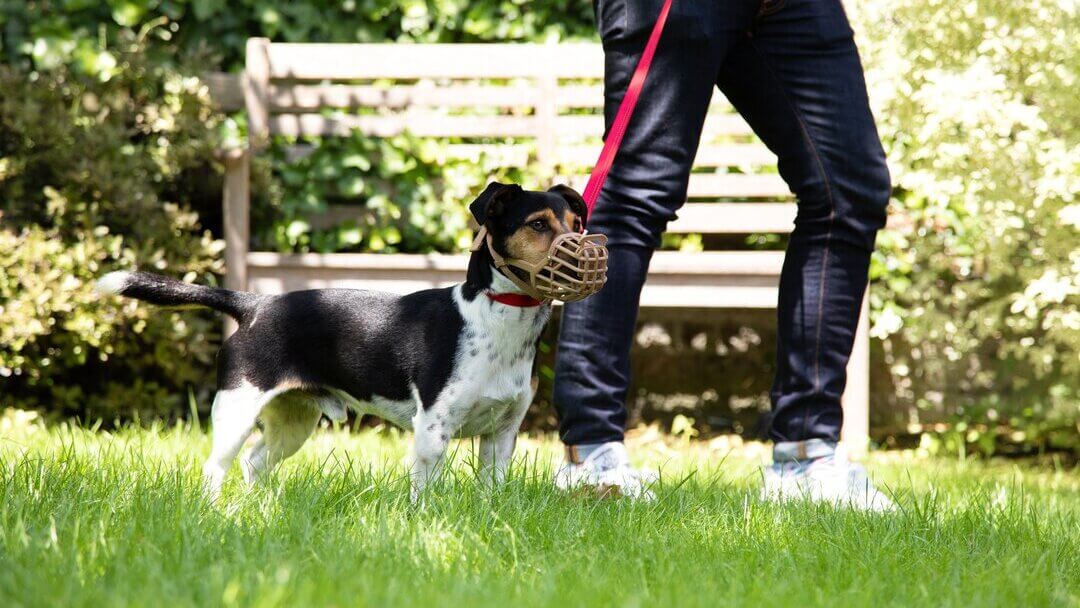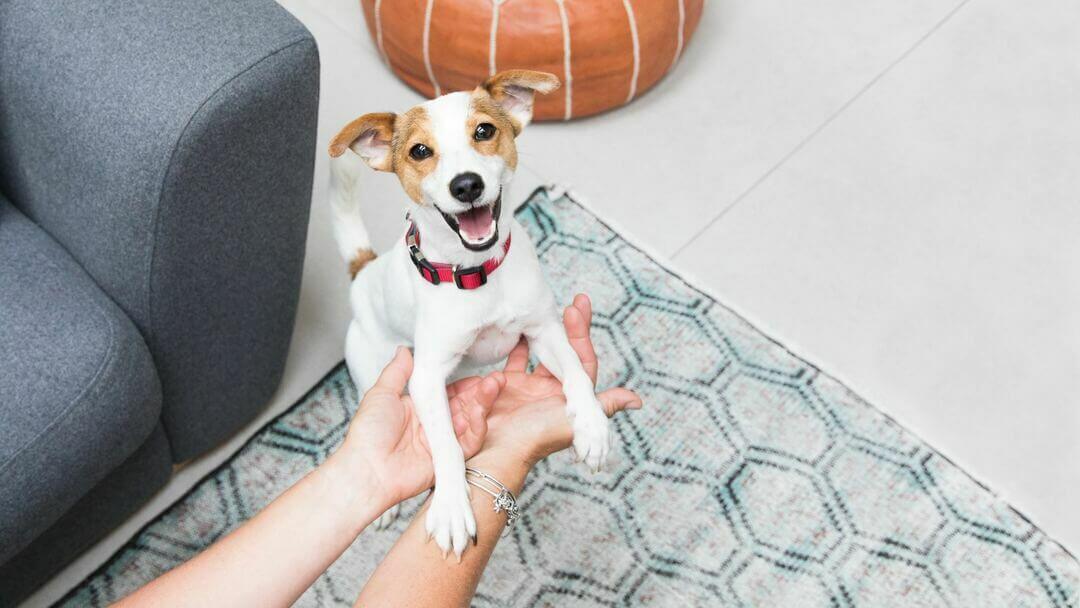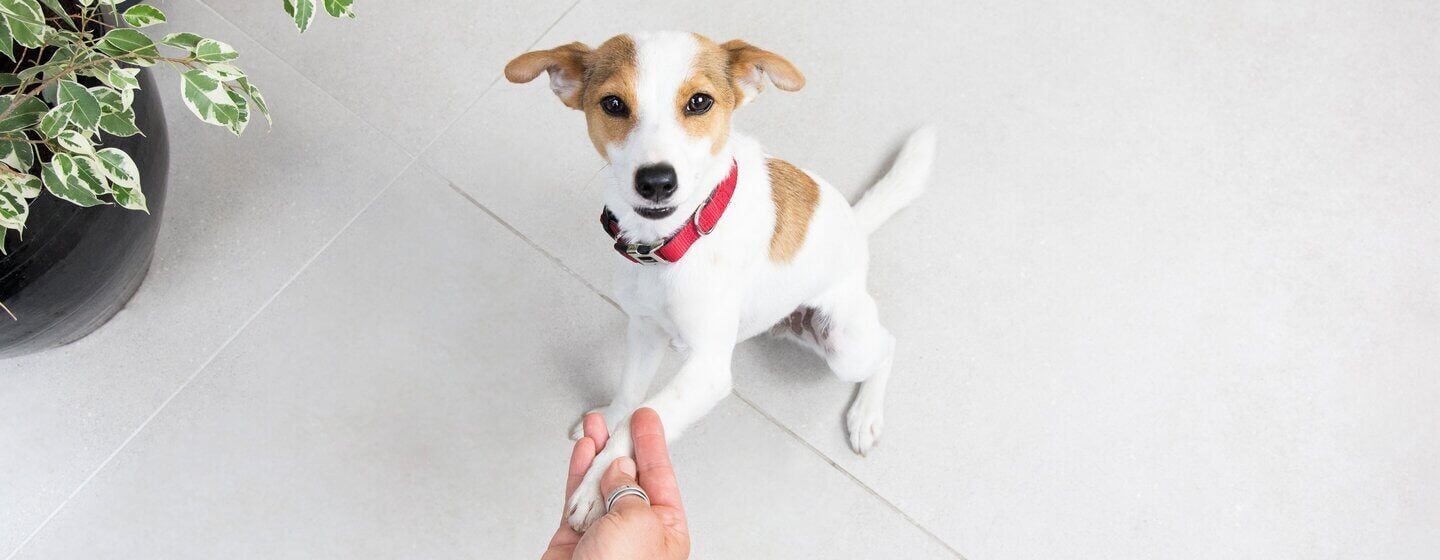
Teaching and training your dog basic commands and cues is a fun and rewarding experience for both of you. It’s important to begin training your dog at an early age to get the foundations right before your puppy grows into an adult dog. Puppy training and teaching your dog is a great way to spend time together and can also be lots of fun!
Dogs are fast learners, and with your loving guidance, training your dog how to ‘come’, ‘sit’, ‘stay’ and even go to the toilet will nurture your relationship as well as encourage good behaviour. Well-trained dogs are less likely to stray, and generally have more comfortable and fulfilling lives compared to their untrained counterparts.
Young puppies make eager pupils, so you can start training your dog as soon as you get them home. It’s a myth that pups need to be at least six months old before they can be properly trained – the younger they are, the easier it is to teach them. Think of them as little furry sponges, waiting to soak up all the learning you can give them!
Here you’ll find lots of advice on the basics of dog training. For more detailed and advanced dog training advice, try contacting a professional trainer. Ask your vet for a recommended local pet behaviourist or dog trainer.
- Keep puppy training sessions short and sweet. Young puppies lose concentration easily, so it’s better to do six five-minute sessions each day than one half-hour session.
- Only have training sessions when you’re in a good mood. Dogs are very receptive to human emotions, so they’ll be able to tell if you’re stressed or grumpy.
- Always finish dog and puppy training sessions on a high with an exercise you know your dog can do easily so you end with success.
- In the beginning train with no distractions. Get the basics down in a quiet setting, and add distractions later, so your dog gets used to a variety of environments.
- Training must always be reward-based, so use lots of toys, treats and cuddles. Negative or punishing techniques are cruel and don’t work, and never use a choke chain as you can injure your dog’s neck very easily.
- Once your dog has got the hang of an exercise, swap food-based treats for toys, or subtract treats from their daily food allowance, to avoid weight gain.
Clicker training uses a small plastic box (available from pet stores) that fits into the palm of your hand. Press one end with your thumb and it makes a clear double ‘click’ noise, which you can train your dog to respond to. Here’s how:
- Firstly, arm yourself with a handful of treats.
- Hand them to your dog one by one, with a short pause between each one.
- At the exact moment they take the treat, give a click.
- Your dog will soon learn that a click means a treat, so they’ll work hard to earn the click. It becomes a ‘yes’ marker – a way of telling your dog that they’ve done well at that moment.
- Many puppy training classes use a clicker, but the exercises below can be done with or without one.
Now that you have all of the tools and rules for training your dog, you can get started!
Sitting on cue is something that we all expect our dogs to do but how many of us have spent the time training this cue so that it’s reliable?
It’s never too late to teach your dog to sit so let’s get started.
- When your dog is standing calmly, hold a treat near their nose.
- Don’t give them too much time to explore the treat as you don’t want them to start jumping up. Hold the treat near your dog’s nose and move your hand slowly over the shape of their head.
- As your dog follows your hand and raises their head, their bottom will hit the floor. The second that happens, praise your dog and reward them with treats.
- Keep practicing this in really short bursts.
- Now that your dog is used to sitting, you can add the word ‘sit’ as they’re moving into the sit position.
- Now keep practising this in really short bursts. Remembering to say the word ‘sit’ as they’re moving into the position, not before or after.
- When you think your dog has associated the word with the movement, you can ask your dog to sit without the lure of a treat.
- If their bottom hits the floor, praise and reward them. If it doesn’t, don’t worry, they just need more practice so go back a step and given them a bit more time.
- As your dog’s response gets faster and more reliable, start asking them to sit in different environments, with some distractions or a small distance away from you.
This is another basic dog command, but be careful not to confuse your dog by saying ‘down’ if you want them to get off the sofa or to stop pawing at your legs. Use ‘off’ for those times instead, and reward them when they obey you.
- Hold a treat in your hand with a little bit sticking out, so your dog can see it.
- Show it to your dog, and then place your hand flat on the floor with the treat underneath it. Your dog will try every which way to get at it!
- Eventually, they’ll lie down. The moment they do, give a click and give them the treat – and lots of praise!
- Keep at it, and as soon as they’ve learned that your hand on the floor means ‘lie down’, add the verbal cue ‘down’ when they do the action.
- With practice, they’ll lie down on request, without the treat.
Teaching your dog to come when called (known as the ‘recall’) is one of the most important things your dog will ever learn. The key to success is starting early (from six to eight weeks), since young puppies love following their owners around. By six months old your dog will be more independent and the recall will be harder to teach.
- Ask a friend to help you with this exercise.
- Get your friend to kneel on the floor, keeping the puppy close in a sitting position.
- Sit right in front of your pet and call him to you by enthusiastically saying their name and the word ‘come’. They won’t have to go very far to reach you.
- Greet them excitedly with open arms. Sometimes it’s helpful to have a treat or a favourite toy in your hands if they’re reluctant at first.
- Now try it again but this time, sit a few paces away. Call him enthusiastically and they’ll race over to you. As soon as they do, give a click, a treat and lots and lots of praise.
- Practice little and often, gradually increasing the distance between you and your puppy. Remember to shower them with praise when they come to you.
- Once they’re able to come on command, start calling them when they can’t see you. Play hide and seek games in the house, so they have to track you down.
- Then, move outside into the garden, and introduce controlled distractions, such as a friend walking past. If you don’t have a garden, borrow a friend’s – don’t try this phase in a public space.
- Once your pup is reliable in an enclosed garden with distractions, it’s time to take the training to the park! Use an extendable lead or a long training line to give them a sense of freedom while you remain in control.
- Practise a few recalls. You’ll have to work extra hard to make yourself look enticing, since there will be lots of exciting distractions for them.
- If they shoot off in the opposite direction and ignore your calls, don’t chase them – they’ll think it’s a great game! Instead, run away in the opposite direction. Your puppy will be confused and end up chasing you. This will teach them to keep a close eye on you when you’re out and about, in case they accidentally lose you.
- Praise, treats and rewards are very important in dog and puppy training, so don’t shout or tell them off if they don’t come, or when they finally arrive, because this will just confuse them. You want your puppy to associate coming to you with being loved and praised, so be patient and practice often.
Training your dog to ‘stay’ is probably one of the most challenging cues to teach – puppies hate being still! But with short, frequent practice sessions this useful exercise can be mastered.
- Start with the 'down-stay'. Ask your dog to go 'down'.
- Say ‘stay’ in a steady tone of voice, and put your hand out in front of you with your palm facing forwards.
- Wait a few seconds and then click and reward your dog for staying put. Practice this several times.
- Next, ask them to go 'down', take a step back, and say ‘stay’.
- After about three seconds, click, step forwards and reward them. Give them lots and lots of praise.
- Gradually increase the length and the distance of the 'stay'. But don't do too much too soon!
- If your dog breaks the ‘stay', don't shout at them. They’ll learn soon enough when the click, treat and praise isn’t forthcoming!
- Once your dog has mastered the 'down-stay', teach your dog to stay in the 'sit' position, and finally in a 'stand' position, using exactly the same technique.
Dog training works by rewarding good behaviour and ignoring unwanted responses – after all, your dog wants your approval. But sometimes you have to show your dog that their behaviour isn’t what you want. Rather than shouting or constantly saying ‘no’, teach your dog a ‘no’ signal that tells them to stop whatever they’re doing whenever they hear it.
Teaching and training your dog to learn the ‘no’ signal can be done with dog-training discs (unless your dog has a very nervous disposition or is easily frightened by sudden noises). These are five metal discs, a little like mini cymbals, joined together on a key fob. You can hold them silently, but at the precise moment you need to say ‘no’ they can be dropped to make a unique sound your dog isn’t likely to hear anywhere else.
- To teach ‘no!’ first get some treats. In the same way that you would teach the dog to associate the click with a treat, you now need to teach them that the sound of the discs means they won’t be allowed a treat.
- Place a treat on the floor. When your dog goes to eat it, rattle the discs in your hand. Remove the treat as you rattle the discs but say nothing – let the sound do the work.
- Over a few repetitions, your dog should stop being startled by the sound and will begin to associate the sound with not getting a reward. Eventually, they won't even attempt to take the treat, anticipating the sound, and give up, looking disappointed.
- Now get them to perform another action, such as a 'sit', and give them a treat. This will make up for their previous disappointment and frustration!
- Soon your dog will associate their actions where the discs are involved as a ‘fail’, and will stop trying without you having to use the discs, and instead just the word ‘no’.
The discs can also be used to teach a ‘leave it’ command.
- Put something tasty on a table, within your dog's reach. Tell them to ‘leave it’, count to three, and then give him a treat (but not the one that he has been told to leave).
- If he goes to take the treat, sound the discs.
- Over several practice sessions, increase the time he has to wait before he is given a treat.
- If you find your dog on the sofa or a bed, say ‘off’ and encourage them to come to you.
- When they come ‘off,' reward them calmly with praise and a 'click', and use your basic training to ask him to 'sit' or lie 'down' instead. This can then also be rewarded.
- Consistency is important. If one member of the family turns a blind eye to the house rules, you've had it!
- If they growl at you for attempting to remove them, back off, and seek the help of a qualified behaviourist via your vet’s referral as soon as possible. Don’t attempt to tackle any aggression problems yourself, as you may make things worse.
Always consult your vet if you have any concerns about your pet’s health, as they can recommend individual advice or treatment options. For detailed behavioural advice tailored specifically for your pet, we suggest you contact a qualified pet behaviourist.
